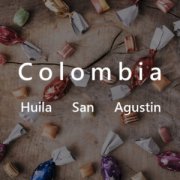Costa Rican breeze treatment plant Monte Brisas Salaka Manor Finca Salaca introduction

For professional baristas, please follow the coffee workshop (Wechat official account cafe_style)
Costa Rican coffee has always been regarded as the perfect type of classic flavor, with a balanced, clean, gentle and supple tone. This batch of coffee beans, through the raw bean treatment of Monte Brisas, a recent rookie in Costa Rica, retains the unique flavor of Villalobos with black honey treatment: flavor narration: honey, black sugar, apricot, candied fruit, flowers, cedar aroma, syrup, lively taste.
Costa Rican coffee cultivation was introduced by Cuba in 1779 and exported for the first time in 1820. There are about 32000 coffee farmers, with an average planting area of less than one hectare (10000 hectares) per farmer. Costa Rica has a population of 41 billion (2006), with a coffee planting area of 82500 hectares and an annual production of 1.7 million bags (60kgs per bag). The annual domestic consumption is 380000 bags, with an average annual national consumption of 5.5kgs, which is higher than that of Japan (consumption 4kgs). At present, Taiwanese are only slightly higher than 1kg. Costa Rica is the country where coffee was first introduced into Central America and has a long history. The coffee organization has a complete system from production to marketing. Because it is located in the Central American Gorge, there are many volcanoes, it has the natural advantages of sunshine and land, and the climate is reconciled by Pacific and Atlantic currents and sea breezes at the same time, the coffee produced has the characteristics of local micro-climate and soil conditions, in terms of quality and quantity, Costa Rican coffee has always been recognized by the world, and has been rated as one of the world-class high-quality coffee. Costa Rican coffee has been cultivated for two hundred years. It was first planted on the slopes of the Poas and Barva volcanoes, today known as the Central Valley (Central Valley). The seven main coffee producing areas are distributed from northwest to southeast, along with the inland central plateau. Costa Rican volcanic terrain with fertile volcanic ash, mild and suitable temperature, and stable and abundant rainfall is one of the reasons why coffee has become one of the main agricultural products in Costa Rica. The seven major producing areas are: Tarrzu, Tres Rios, Orosi, Central Valley, West Valley, Turrialba and Brunca.

Brief introduction of Salaka Manor:
Salaca Manor is now owned by Maria Elena and is almost exclusively planted with Villalobos species, mixed with a small number of Kaddura species. Villalobos is a branch of Typica, which is characterized by delicate appearance, floral and citrus aromas and subtle acidity of apricots, peaches and plums. Between 1950 and 1960s, Costa Rica planted a large number of Villalobos species in the western valley, and up to now, a large part of the Villalobos species are still planted in the western valley at such a high altitude. The variety was also introduced to Indonesia by Dutch traders in the late 1960s.
Product name: Costa Rican breeze treatment plant Salaka manor black honey treatment (Villalobos species)
(Costa Rica West Valley Monte Brisas Salaca Villalobos Black Honey)
Producing area: Zarcero area of western valley (West Valley)
Producer: Finca Salaca Manor Saraca
Treatment plant: breeze treatment plant (Monte Brisas)
Variety: Villalobos species
Altitude: average 1750 m
Grade: Nbig A
Treatment: black honey treatment
Important Notice :
前街咖啡 FrontStreet Coffee has moved to new addredd:
FrontStreet Coffee Address: 315,Donghua East Road,GuangZhou
Tel:020 38364473
- Prev

San Agustin Lake Manor Los Lagos in St. Augustine, Villa Province, Colombia
For professional baristas, follow the Coffee Workshop (Wechat official account cafe_style) about 700 million coffee trees have been documented in Colombia, 66% of which are grown in modern plantations and the rest on small traditional farms. The main varieties include Kaddura Caturra, Colombia Colombia, Tibica Tipica, bourbon Bourbon, elephant bean Ma.
- Next

The Origin of Mysore Nuggets Extra Bold of Moka seed Maisuo Gold Brick in Maiso producing area of India
Exchange of professional baristas Please follow the coffee workshop (Wechat official account cafe_style) Coffee in India: the early Arab autocratic coffee cultivation and marketing, coffee sold to Europe are the only monopoly, coffee seeds and saplings are extremely strict control. In 1670, an Indian Muslim practitioner, Baba Budan, made a pilgrimage to Mecca, Arabia. He was in Moka, Yemen.
Related
- Detailed explanation of Jadeite planting Land in Panamanian Jadeite Manor introduction to the grading system of Jadeite competitive bidding, Red bid, Green bid and Rose Summer
- Story of Coffee planting in Brenka region of Costa Rica Stonehenge Manor anaerobic heavy honey treatment of flavor mouth
- What's on the barrel of Blue Mountain Coffee beans?
- Can American coffee also pull flowers? How to use hot American style to pull out a good-looking pattern?
- Can you make a cold extract with coffee beans? What is the right proportion for cold-extracted coffee formula?
- Indonesian PWN Gold Mandrine Coffee Origin Features Flavor How to Chong? Mandolin coffee is American.
- A brief introduction to the flavor characteristics of Brazilian yellow bourbon coffee beans
- What is the effect of different water quality on the flavor of cold-extracted coffee? What kind of water is best for brewing coffee?
- Why do you think of Rose Summer whenever you mention Panamanian coffee?
- Introduction to the characteristics of authentic blue mountain coffee bean producing areas? What is the CIB Coffee Authority in Jamaica?

